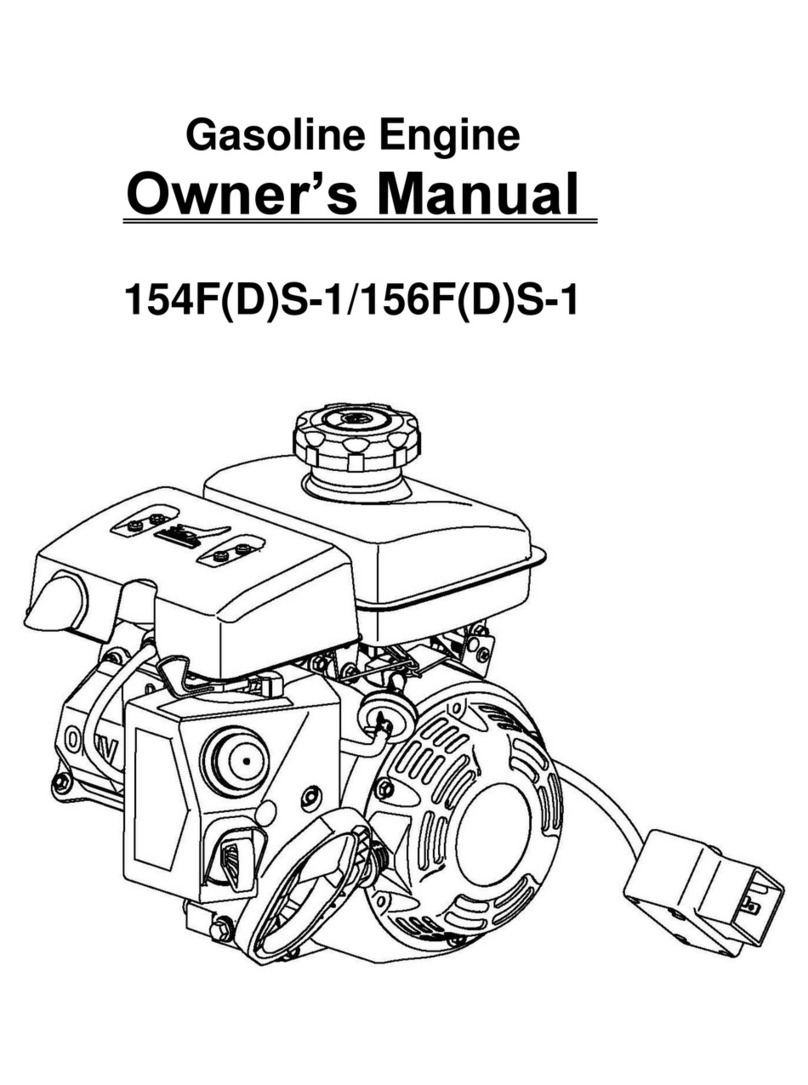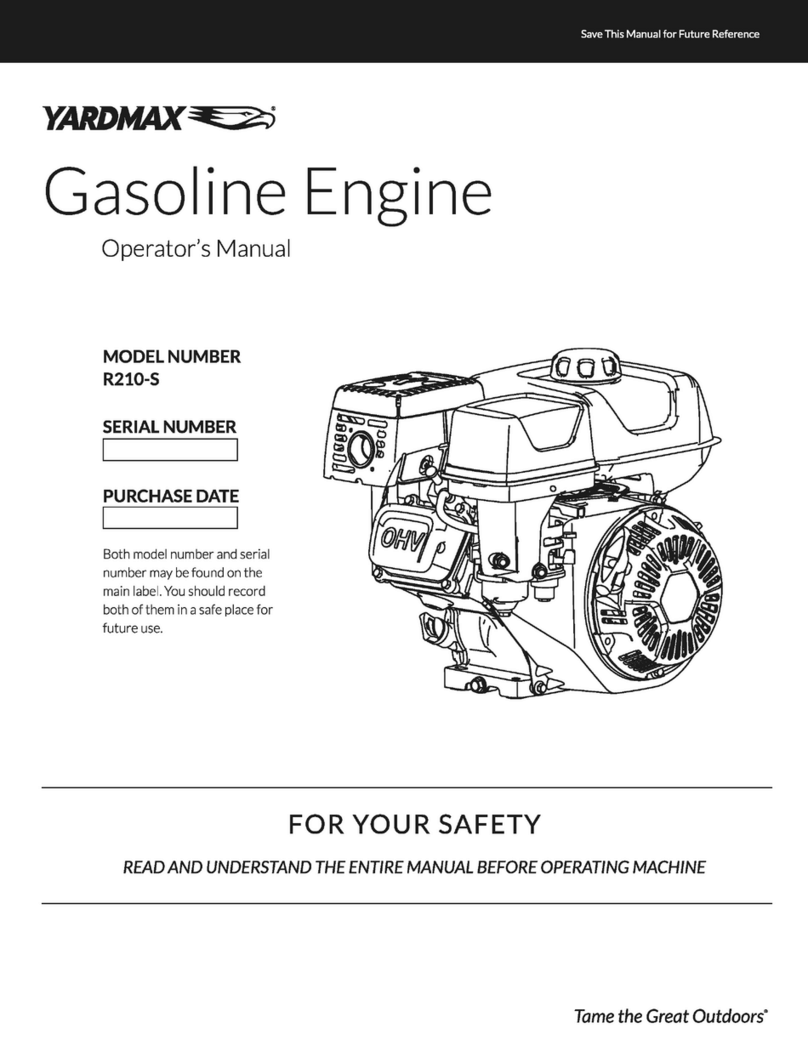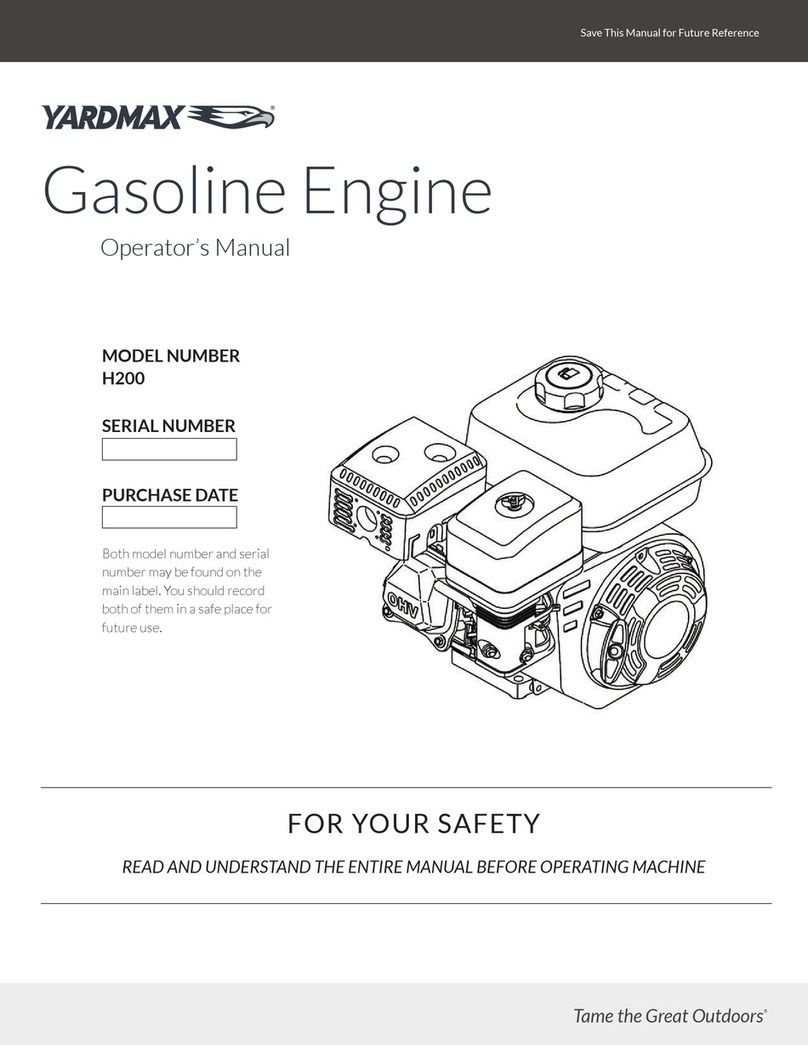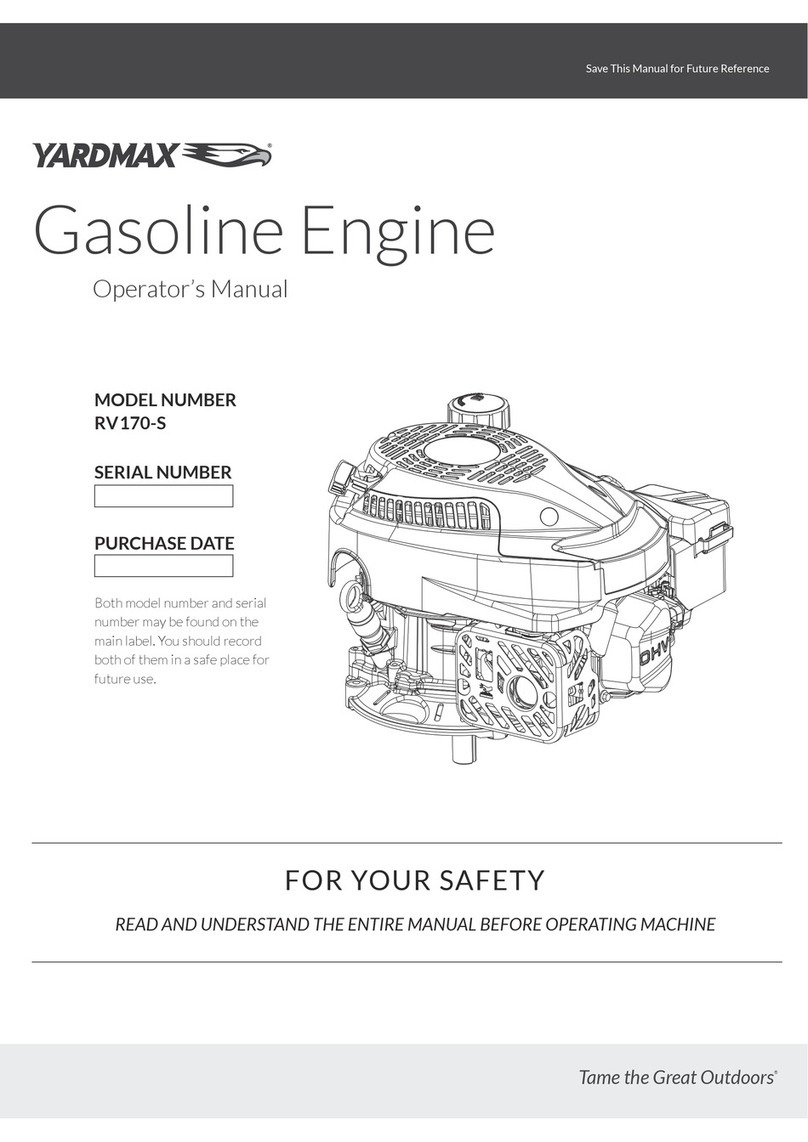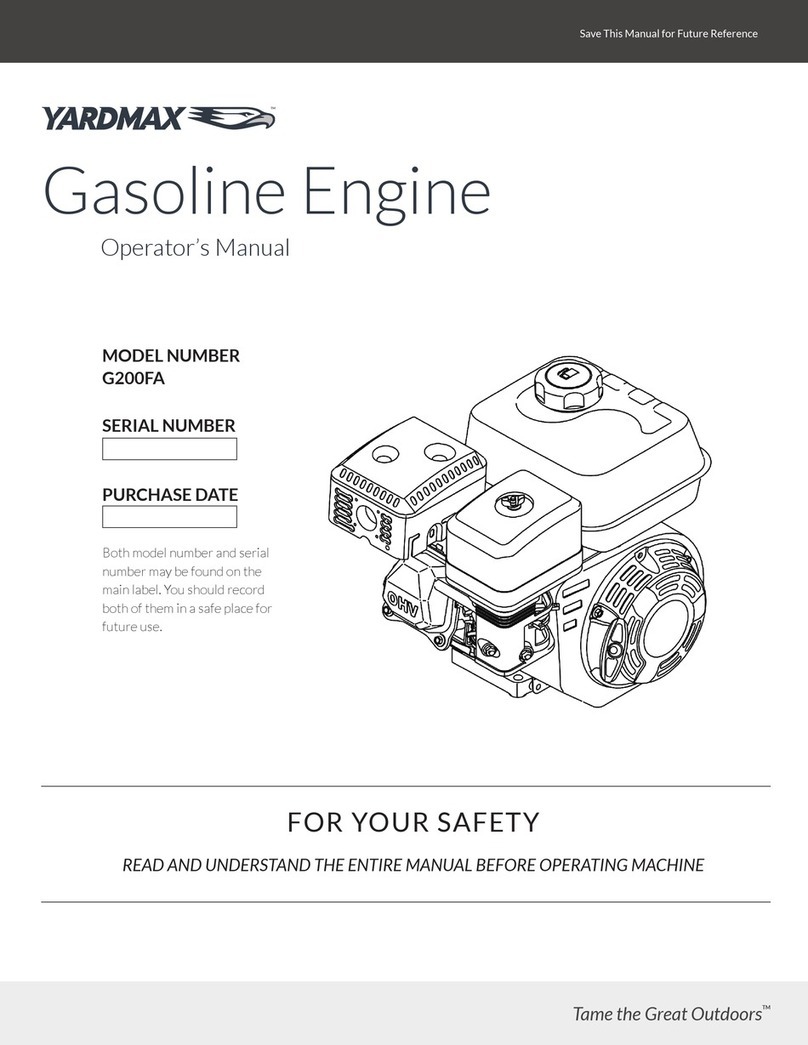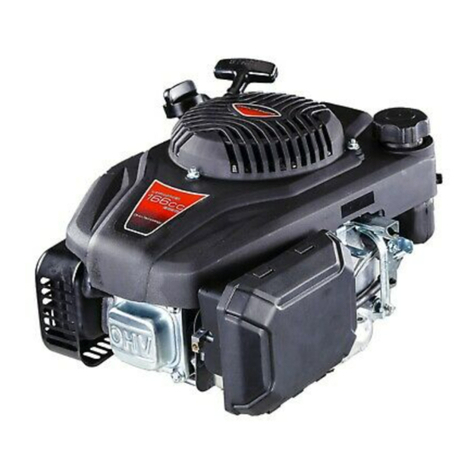
SAFETY
IMPORTANT SAFETY INFORMATION
Most accidents with engines can be prevented if you follow all
instructions in this manual and on the engine. Some of the most
common hazards are discussed below, along with the best way to
protect yourself and others.
OWNER RESPONSIBILITIES
YARDMAX engines are designed to give safe and dependable
service if operated according to instructions. Read and
understand this owner’s manual before operating the engine.
Failure to do so could result in personal injury or equipment
damage.
Know how to stop the engine quickly, and understand the
operation of all controls. Never permit anyone to operate the
engine without proper instructions.
Do not allow children to operate the engine. Keep children and
pets far away from the area of operation.
OPERATOR SAFETY
Safety Measures
START/STOP SAFETY
Starting The Engine
Warning!
Wash hands after using the machine, refueling, and
changing uids. Certain components in this product
and its accessories contain chemicals known to cause
cancer, birth defects, or other reproductive harm
according to the State of California.
Warning!
Kick back or rapid retraction of the recoil cord will
pull the operators hand and arm towards the engine
quicker than you can let go.
Warning!
Always run your engine outdoors. Exhaust from the
engine contains fumes known to cause cancer, birth
defects, or other reproductive harm according to the
State of California.
Warning!
YARDMAX engines are not engineered or intended to
be used to power any other device than what it was
originally specified in. Including but not limited to
competitive racing events, recreational, sport or all-
terrain vehicles (ATV’s), go-karts, fun-karts, golf-carts, etc.
Avoiding Kick Back
Lightly pull the recoil handle so that the cord is taught prior to
pulling harder to start.
Grip the starter handle so you can quickly release it if needed.
If gripped too tightly injury could result.
When the rope is taut with resistance pull quickly and smoothly
to avoid kick back.
FUEL SAFETY
Warning!
Fuel and its vapors are extremely ammable and
explosive. Fire or explosion can cause severe burns or
death. Keep fuel away from sparks, open ames, pilot
lights, heat sources, or any other ignition sources. If
fuel spills, wait for it to completely evaporate before
starting the engine.
HOT EXHAUST
The mufer will become very hot during operation and will remain
hot for a while after stopping the engine. Be careful not to touch the
mufer while it is hot. Let the engine cool before storing it indoors.
To prevent re hazards and to provide adequate ventilation for
stationary equipment applications, keep the engine at least 3
feet (1 meter) away from both building walls and from other
equipment during operation. Do not place ammable objects
close to the engine.
CARBON MONOXIDE HAZARD
Exhaust gas contains poisonous carbon monoxide. Avoid
inhalation of exhaust gas. Never run the engine in a closed garage
or conned area.
OTHER EQUIPMENT
Review the instructions provided with the equipment powered
by this engine for any additional safety precautions that should
be observed in conjunction with engine startup, shutdown,
operation, or protective apparel that may be needed to operate
the equipment.
4
Gasoline Engine
»
Operator’s Manual
Safety
|
LC152F-1.indd 4 2017/3/21 15:12:16

